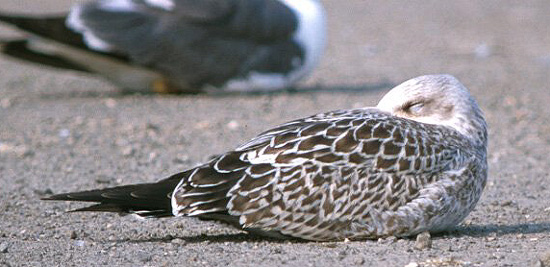 Yellow-legged
Gull- Geelpootmeeuw (L. michahellis): 1cy August
Yellow-legged
Gull- Geelpootmeeuw (L. michahellis): 1cy August
(last update: 08 december 2003)
YLG
1cy May
YLG
1cy June
YLG
1cy July
YLG 1cy August
YLG 1cy September
YLG 1cy October
YLG 1cy November
YLG 1cy December
YLG
2cy January
YLG 2cy February
YLG 2cy March
YLG 2cy April
YLG 2cy May
YLG 2cy June
YLG 2cy July
YLG 2cy August
YLG 2cy September
YLG 2cy October
YLG 2cy November
YLG 2cy December
YLG
3cy January
YLG 3cy February
YLG 3cy March
YLG 3cy April
YLG 3cy May
YLG 3cy June
YLG 3cy July
YLG 3cy August
YLG 3cy September
YLG 3cy October
YLG 3cy November
YLG 3cy December
YLG
sub-ad Jan.
YLG sub-ad Feb.
YLG sub-ad March
YLG sub-ad April
YLG sub-ad May
YLG sub-ad June
YLG sub-ad July
YLG sub-ad Aug.
YLG sub-ad Sept.
YLG sub-ad Oct.
YLG sub-ad Nov.
YLG sub-ad Dec.
YLG
adult January
YLG adult February
YLG adult March
YLG adult April
YLG adult May
YLG adult June
YLG adult July
YLG adult August
YLG adult September
YLG adult October
YLG adult November
YLG adult December
Photo 7: Yellow-legged Gull 1cy August 25 2000, Le Portel / Boulogne-sur-Mer, France.
Telling a juvenile Lesser Black-backed Gull from
a Yellow-legged Gull is not always straightforward.
Although the fresh condition of the plumage
in the picture advocates LBBG, one has to be aware that some michahellis
exhibit a surprisingly fresh plumage at the end of August with no sign of moult
to 1st winter plumage. Presumably, these late moulting birds originate
from the northern extreme of michahellis breeding range, where egg
hatching date is later than in colonies around the Mediterranean.
In such a case identification should be based on as many features as possible:
structural characters, brown tone of centres of upper-parts, coloration of
under-parts, tail-pattern, pattern of inner hand and leg colour. See also the
identification summary in the July
Section.
